
NGC 3 is a lenticular galaxy with the morphological type of S0, located in the constellation of Pisces. Other sources classify NGC 3 as a barred spiral galaxy as a type of SBa. It was discovered on November 29, 1864, by Albert Marth.

NGC 524 is a lenticular galaxy in the constellation Pisces. It is at a distance of about 90 million light-years away from Earth. In the central bulge of the galaxy is visible gas forming a spiral structure. It is the largest galaxy in the small NGC 524 group of galaxies, which is associated with NGC 488 and its group. It was discovered by William Herschel in 1786.
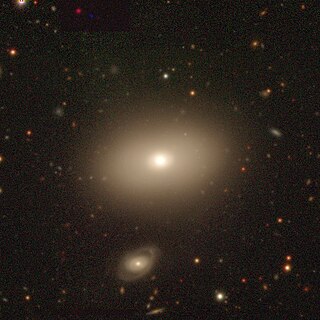
NGC 7302 is a lenticular galaxy located around 124 million light-years away from Earth in the constellation of Aquarius. NGC 7302 was discovered by British astronomer William Herschel on October 3, 1785 and was rediscovered by American astronomer Lewis Swift on August 8, 1896 and was listed in the IC catalogue as IC 5228. It is also part of a group of interacting galaxies.

NGC 507, also known as Arp 229, CGCG 502-67, MCG 5-4-44, PGC 5098, UGC 938, and V V 207, is a lenticular galaxy in the constellation Pisces. It was described as being "very faint", "pretty large", "round", "brighter in the middle", and "south of NGC 508" by John Dreyer in the New General Catalogue. The two galaxies are a part of the Atlas of Peculiar Galaxies, where NGC 507 is described as "Circular or near circular rings of small density difference."
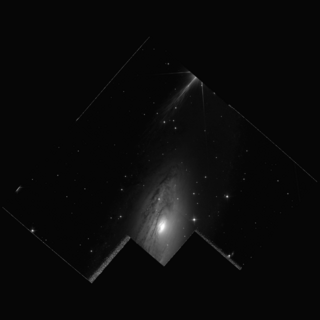
NGC 7013 is a relatively nearby spiral or lenticular galaxy estimated to be around 37 to 41.4 million light-years away from Earth in the constellation of Cygnus. NGC 7013 was discovered by English astronomer William Herschel on July 17, 1784 and was also observed by his son, astronomer John Herschel on September 15, 1828.

NGC 463 is a lenticular galaxy located about 264 million light-years away from Earth in the constellation Pisces. It was discovered by French astronomer Édouard Stephan on December 16, 1871.
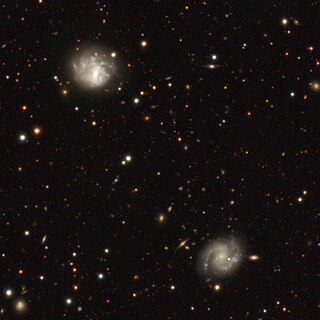
NGC 7072 is an intermediate spiral galaxy located about 210 million light-years away in the constellation of Grus. NGC 7072 was discovered by astronomer John Herschel on September 5, 1834.
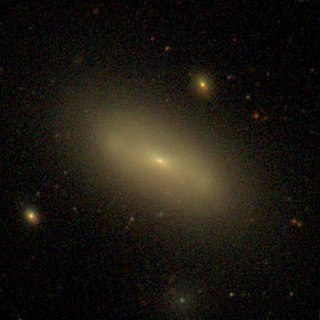
NGC 4497 is a lenticular galaxy located about 60 million light-years away in the constellation Virgo. NGC 4497 was discovered by astronomer William Herschel on March 15, 1784. It was rediscovered by astronomer Arnold Schwassmann on November 8, 1900 and was listed as IC 3452. NGC 4497 is a member of the Virgo Cluster.

NGC 499, also occasionally referred to as PGC 5060, IC 1686 or GC 289, is a lenticular galaxy in the constellation Pisces. It is located approximately 197 million light-years from the Solar System and was discovered on 12 September, 1784 by astronomer William Herschel.

NGC 498 is a lenticular galaxy located about 260 million light-years away from Earth, in the constellation Pisces. NGC 498 was discovered by astronomer R. J. Mitchell on October 23, 1856.

NGC 679 is an elliptical or a lenticular galaxy located 210 million light-years away in the constellation Andromeda. The galaxy was discovered by astronomer William Herschel on September 13, 1784 and is a member of Abell 262.

NGC 687 is a lenticular galaxy located 220 million light-years away in the constellation Andromeda. It was discovered by astronomer William Herschel on September 21, 1786 and is a member of Abell 262.

NGC 700 is a lenticular galaxy located 200 million light-years away in the constellation Andromeda. NGC 700 was discovered by astronomer Bindon Stoney on October 28, 1850. It is also a member of Abell 262.

NGC 704 is a lenticular galaxy located 220 million light-years away in the constellation Andromeda. The galaxy was discovered by astronomer William Herschel on September 21, 1786 and is also a member of Abell 262.

NGC 705 is a lenticular galaxy located 240 million light-years away in the constellation Andromeda. The galaxy was discovered by astronomer William Herschel on September 21, 1786 and is also a member of Abell 262.

NGC 709 is a lenticular galaxy located 150 million light-years away in the constellation Andromeda. It was discovered by the Irish engineer and astronomer Bindon Blood Stoney on October 28, 1850 and is a member of the galaxy cluster Abell 262.
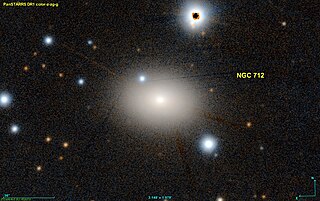
NGC 712 is a lenticular galaxy located 230 million light-years away in the constellation Andromeda. It was discovered by astronomer John Herschel in October 1828 and is a member of Abell 262.

NGC 714 is a lenticular galaxy located 190 million light-years away in the constellation Andromeda. The galaxy was discovered by astronomer Bindon Blood Stoney on October 28, 1850 and is a member of Abell 262.

NGC 717 is a lenticular galaxy located 210 million light-years away in the constellation Andromeda. The galaxy was discovered by astronomer Bindon Blood Stoney on October 28, 1850 and is a member of Abell 262.

NGC 7836 is an irregular spiral galaxy located about 260 million light-years away in the constellation Andromeda. It was discovered by the astronomer Lewis Swift on September 20, 1885.



















